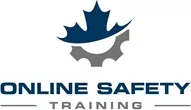Golf Cart Safety

Golf Cart Safety in Canada: Golf Courses and Industrial Sites
Golf carts have become essential in a variety of Canadian settings—not just on golf courses, but also in industrial facilities, airports, campuses, resorts, and large event venues. While they offer a convenient and eco-friendly mode of transportation, golf carts can pose significant safety risks when not operated properly. Whether you’re managing a golf course in Ontario or running an industrial warehouse in Alberta, understanding and promoting golf cart safety is essential for reducing accidents and ensuring the wellbeing of operators, passengers, and pedestrians.
The Growing Use of Golf Carts Beyond the Fairway
In recent years, golf carts have found increasing utility in industrial settings. These low-speed vehicles are ideal for navigating large properties, transporting goods, and moving personnel quickly. However, their expanded usage also means that more people—many without formal training—are driving golf carts in environments filled with equipment, machinery, and pedestrians. This makes adherence to safety protocols more important than ever.
Key Safety Concerns in Golf Course Settings
On the fairways, golf carts help players save time and energy, but they can also become a hazard when misused. Common incidents include:
-
Overturning on steep or wet terrain
-
Collisions with other carts or pedestrians
-
Speeding or distracted driving
-
Driving under the influence of alcohol
To mitigate these risks, golf course managers should:
-
Implement Clear Rules and Signage: Post visible signs that outline speed limits, restricted areas, and safe paths of travel. Cart paths should be well maintained and clearly marked.
-
Provide Operator Instructions: Before teeing off, renters should be given a quick safety briefing, including how to operate the cart, where to drive, and what to avoid.
-
Limit Alcohol Consumption: Just like with any vehicle, operating a golf cart under the influence of alcohol is dangerous. Courses should consider policies to prevent intoxicated players from driving carts.
-
Regular Maintenance: Inspect carts frequently for brake issues, worn tires, faulty steering, or battery problems.
Golf Cart Safety in Industrial and Commercial Environments
In industrial settings, golf carts are often used to improve efficiency, but the environment presents a different set of challenges, including narrow aisles, forklifts, and uneven flooring.
Here are some best practices:
-
Train All Operators: Unlike on golf courses where drivers may be temporary users, in industrial settings, staff should receive formal training, including how to maneuver in tight spaces and avoid workplace hazards.
-
Enforce Speed Limits: Industrial sites should post strict speed limits and ensure operators comply, especially when driving near foot traffic or in high-activity zones.
-
Use Safety Equipment: Industrial carts should be outfitted with seat belts, lights, horns, mirrors, and, where necessary, roll-over protection structures (ROPS).
-
Pedestrian Awareness: Establish designated walkways and crossings. Operators should be trained to yield to pedestrians at all times.
-
Inspect and Document: Daily inspections should be mandatory, and any issues should be logged and addressed before the cart is put back into service.
Legal and Regulatory Considerations in Canada
In Canada, golf carts are generally classified as low-speed vehicles (LSVs), and regulations vary by province and municipality. Some jurisdictions allow golf carts on public roads under specific conditions, such as reduced speed limits, reflective markings, and insurance requirements. It’s essential for operators and businesses to check local laws and ensure compliance.
Whether used for leisure or logistics, golf carts must be treated with the same level of respect as any other vehicle. By creating a culture of safety, offering proper training, and maintaining equipment, both golf courses and industrial facilities can reduce risks and keep people safe.
Taking the time to implement these practices not only helps prevent accidents, but also fosters a more professional and responsible environment. In the long run, it’s a small investment that can have a big payoff in safety and peace of mind.
Click here for online golf cart safety training.
